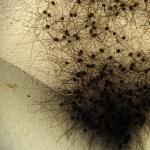
A tattoo should be an adornment to your body, perform an aesthetic function, and please the eye. But what if this is not the case at all? That's right - you can cover up the tattoo. This may be needed for many reasons. Perhaps the tattoo was made in distant youth, with low-quality materials, by an incompetent artist. Perhaps the sketch was unsuccessful or simply a previously loved tattoo has lost its beauty and needs to be corrected. Or maybe tastes have changed and the tattoo that made you happy before is no longer pleasant. In such cases, covering the tattoo can save the situation and eliminate the need for expensive laser removal of the tattoo from the skin.
What is important to know before deciding to cover up a tattoo?
Just like getting a tattoo for the first time, covering up a tattoo is a big step that should be carefully considered. To avoid “dancing” on the same rake, this is what you should think about.
- It's worth looking for a reputable, well-established tattoo parlor. This is easy to do by searching the Internet for reviews of salons and looking at their ratings. It is better to spend time on this step rather than go to the first place you come across to cover the tattoo.
- The same applies to the master you are going to contact.
- You need to understand that changing an old design for a new one is much more difficult than getting a tattoo again. There will be some restrictions in the choice of pattern and colors.
- The new tattoo is gradually superimposed on the old one, so it will definitely turn out to be larger and darker, this also needs to be kept in mind.
- Having chosen a master and decided approximately what you want, you need to discuss with him in detail how the tattoo will be covered, all the nuances of the process and the expected result. And it’s better to listen to his advice (since you decide to trust him) in order to achieve the best result.

Choosing a design and color scheme for a new tattoo
As already mentioned, this issue has its limitations.
- For example, you cannot cover it with yellow! If it is black, then the new drawing will also be black. If the tattoo is colored, but light or very faded, then everything is simpler - the artist will take darker and more saturated colors to cover the tattoo with lighter pigments.
- Even if it seems that a light shade is bright and can cover up a darker one, this is not entirely true. A good artist knows that over time a dark tattoo will appear as a dirty blot.
- Also, covering a tattoo implies that the elements of the new design must coincide with the lines of the old one and obey them. That is, you cannot pin, say, a portrait on top of some rich abstract geometric pattern. Therefore, it is impossible to sketch an old drawing with absolutely any new one you wish. Here the master will help you choose the most successful sketch; you should not, having chosen it yourself, firmly stand your ground, contrary to the advice of a specialist.
- Well, the new tattoo will naturally be much larger than the old one.

Requirements for a tattoo artist
If you need to cover up an unsuccessful, poorly done tattoo, then the requirements for the artist must be high so that the new one does not turn out to be just as unsuccessful. After all, covering a tattoo is a more complex and painstaking process than applying a design to clean skin.
- The master must have sufficient experience in correcting tattoos; you should not contact a beginner.
- In addition, he must have a rich imagination, have a good idea of the entire work process step by step, keep the end result in mind, and be able to improvise in the process without compromising quality.
- It is important that this person works only with high-quality materials with rich, long-lasting pigments so that painting over the tattoo is successful.
- Of course, it is important to use sterile disposable needles and generally adhere to sanitary rules.
- Do not skimp on the work of a professional, because a good master will not work for three kopecks. But a truly high-quality tattoo covering is worth the money spent.

By the way, it’s not at all bad if the master works at home. The main thing is that it is a professional, sanitary conditions are met and good materials are available.
Camouflage tattoo - an alternative solution
Redrawing an old image, applying new motifs and colors is not the only way to cover up a tattoo. There is also the so-called camouflage. The scheme here is simple - the design is painted over with flesh-colored paint that best matches your skin tone. This is especially successful with tattoos that are very faded, faded, and small in size. The tattoo will not completely disappear, but it will become much less noticeable, as if generously smeared with foundation. On areas of the body that are not too conspicuous, this is a completely acceptable option.
What if you cover up the tattoo not with a flesh color, but with a black color? Draw, for example, a black square? Yes, there are such options. Perhaps it looks a little strange and seems too radical, but they do this too.

It is possible to cover up a tattoo, and quite successfully at that, the Internet is replete with gorgeous “before and after” photographs, and the result of covering is sometimes simply fantastic. But remember that it is unlikely that you will be able to correct the drawing again and again. Therefore, if something went wrong when you first applied a tattoo, then when correcting it you need to take into account old mistakes and try not to repeat them!
Video: Covering up an old tattoo
HOW TO CHANGE A TATTOO: DEVELOPMENT AND CORRECTION OF AN UNSUCCESSFUL TATTOO
A tattoo should please the eye and decorate the body. Or it should signal to others about your passions, views on life, and worldview. If the image does not perform any of these functions, then perhaps it needs correction? Are you tired of your tattoo? Have the contours become fuzzy and the drawing has lost its attractiveness? Have your life priorities changed, and your body image looks ridiculous in your current reality?
It is not necessary to get rid of a tattoo by resorting to lengthy laser tattoo removal. You can correct the situation much faster if you cover the ugly/unsuccessful/old image with a new tattoo.
HAVE YOU DECIDED TO COVER YOUR TATTOO? WHAT DO YOU NEED TO KNOW?
- In order not to further aggravate the situation, you should only contact an experienced specialist, or a specialized tattoo parlor, to redo or cover up an unsuccessful tattoo.
- Remaking or covering up a body image is much more difficult than applying an image from scratch. Therefore, the master must have experience in such work.
- For old color pictures there will be a certain limitation on the choice of colors for the new picture.
- The new tattoo will be done in stages, the design will be darker and larger in size, as it should cover the old tattoo.
HOW DOES AN OLD TATTOO COVER UP?
Not every sketch and not every pigment color can be chosen for a new body design. This has already been discussed. The new image should completely hide the old tattoo. Therefore, it will not be possible, for example, to cover a black picture with yellow pigment. As for black tattoos, they are covered only with black paint. The sketch may have colored fragments, but they will be applied to “clean” areas of the skin. For a faded color tattoo, color pigments of a darker, deeper shade can be used.
The elements of the new design should coincide with the main lines of the old tattoo, as if subordinate to it. For example, it will not be possible to draw a portrait on top of a geometric image with clear lines and angles. The artist’s task is to select or develop a sketch that will “lie” on the old tattoo and cover it.
It is important that the new tattoo is performed with certified high-quality materials. Such pigments are inert and do not react with other chemicals, so there is no fear that covering a tattoo will be harmful to health.
CAMOUFLAGE TATTOO AS AN ALTERNATIVE SOLUTION
Covering an outdated image is not the only way to get a new body art. Experienced craftsmen use the “camouflage” technique. The method is based on painting part of the drawing with a flesh-colored pigment. This method is effective when it comes to small, faded, blurry tattoos. It will not be possible to completely cover the tattoo, as the darker paint will show through. But you can easily hide certain parts of the picture.
DEVELOPMENT OF THE FIGURE
You can also change a boring tattoo if you “modify” it. New elements are added, the image acquires details, color updates, shadow effects, and retouching. It turns out to be a completely new tattoo. In this case, there is no need to work on the old drawing, since the work is done around it.
Based on the existing image, the artist creates a completely new sketch, in which the old tattoo becomes part or the basis of a different composition. Next, the pigment is sequentially applied, and the salon client receives a brand new body image. The method is also called tattoo correction.
It is extremely important to understand that covering a tattoo repeatedly will not work. An experienced specialist can work on the image once, or maximum twice (for example, overlapping and reworking). But this is the limit. Therefore, before you apply your first body image, before choosing an original sketch, be sure to think about how this design will affect your life. If there is even the slightest doubt, it is better to postpone the procedure until the decision is clear and unshakable.
Did you like the article? Please rate
Sketches
Information content of the article: 96.34% - 9 votes
Great
Tattoo culture is over 5,000 years old. Along with it came the problem of removing tattoos. The simplest and most ancient method is to cut out a piece of skin with part of the tattoo with some kind of surgical instrument, it’s also good if it’s a scalpel, or even just a knife... The other 999 methods are even less humane.
A tattoo is a design applied to the skin. Tattoo culture is over 5,000 years old. During this time, a whole cult of various beliefs and superstitions formed around her.
A tattoo is a design made using various, sometimes homemade, dyes applied mechanically under the skin.
Most often, tattoos are performed using needles soaked in dye. The needle pierces the skin and brings the dye under the skin. During this mechanical procedure, fairly small particles of dye located on the surface of the needle are crushed into even smaller structures, consisting of only a few thousand molecules of dye and having dimensions of no more than 10 microns. Within 5-7 days after applying a tattoo, the body, protecting itself from a foreign substance introduced under the skin - dye, builds up protective capsules of connective tissue cells around these tiny particles of dye. The tattoo becomes an extremely stable structure.
If within 24-48 hours after applying a tattoo, using various methods, you can simply “wash out” up to 75-80% of the dye applied under the skin, then after 5-7 days it becomes impossible to remove it in any way that does not destroy the structure of the skin any part of the dye introduced under the skin.
Since the emergence of the art of tattooing, the problem of removing tattoos has also arisen. Since, due to its structure described above, a tattoo is an extremely stable structure, it is extremely difficult to remove it. The simplest, most ancient and extremely unaesthetic in appearance of the scars remaining after their application are various methods of mechanical removal of pieces of skin with a tattoo. The simplest and most ancient method is to cut out a piece of skin with part of the tattoo with some kind of surgical instrument (knife, scalpel, in prisons - a razor and a sharp piece of glass).
Since such operations are performed, one might say, in the field, then, in addition to the high risk of wound infections up to and including general sepsis, no one sutures the resulting wounds. This leads to their scarring. Scars from mechanical tattoo removal methods are the most unaesthetic in appearance.
With the development of medicine and plastic surgery, mechanical methods of tattoo removal began to take on more civilized forms. For example, in plastic surgery the following types of tattoo removal operations are used. Removal of a narrow, no more than 1 cm wide, strip of skin with part of the applied pattern, followed by tightening the edges of the resulting wound and stitching them together with internal and external cosmetic sutures. Since the width of the removed piece of skin cannot be more than 1 cm, and the length, as a rule, is no more than 5-7 cm, then, obviously, to remove tattoos of large areas, a large number of such operations are required, which is significant, sometimes up to several years, increases the total time for removing large area tattoos.
Skin grafting. However, there are two methods of skin grafting for tattoo removal. The first is when a significant (up to an area the size of a cigarette pack) area of skin with a tattoo is removed, and in its place another, clean, without a pattern, piece of skin from the patient’s back or buttocks is planted. The negative aspect of this method is that both pieces are cut out entirely, that is, all intradermal vessels are destroyed, through which the skin area is fed under normal, non-surgical conditions. Accordingly, when transplanting a piece of skin taken, say, from the patient’s back, in addition to applying cosmetic sutures, it is also necessary to perform vascular plastic surgery (suturing the intradermal supply vessels), which is extremely difficult. That is why this method often gives up to 30% failures, when the transplanted skin area still dies and is rejected by the body.
The second method of skin transplantation is more complicated, but also gives up to 95% successful results. It consists of making an incision near the area of skin with the tattoo. A rubber bulb with a special gel is inserted under a clean area of skin next to the tattoo and the incision is sutured. The inserted bulb is periodically inflated with gel using a special syringe. The volume of the pear under the area of skin without tattoos gradually increases. This causes the area of clear skin above the pear to grow. After 1.5-3 months, a fairly large skin pocket appears. That is, a piece of clean skin is grown as if in place next to the tattoo that is subsequently removed. Then an incision is made again, the pear with the gel is removed from the skin pocket grown with its help, a piece of skin with a tattoo is cut out, and this place is covered with a flap of clean skin newly grown nearby. The edges of the wound are sutured with cosmetic sutures. Since with this method the blood vessels feeding the skin flap grown using a pear with gel are not cut along the entire perimeter (as with the first method), but remain intact on at least 1/2-1/3 of the area, then the survival rate skin turns out to be incomparably higher.
However, all of the listed methods of tattoo removal using skin grafting have a common extremely negative feature - the need to use general anesthesia. At the same time, I know of cases where the duration of one of the operations for such a transplant reached 5-7 hours. And sometimes several such operations are required to remove large area tattoos, which can increase the total time the patient remains under anesthesia to 30-40 hours in total for the total number of operations.
The tattoo is done like this. A figure is drawn on a checkered piece of paper from a school notebook with a fountain pen. Then you need to moisten the part of the skin on which the drawing will be applied, at least with saliva. Attached a piece of paper - and the tattoo is ready. Almost like the real thing. And it’s good that it’s “almost”, because it turns out they can cripple someone for the real thing. And if you're lucky, just beat him up.
However, it is widely known in anesthesiology circles that general anesthesia lasting more than 1.5-2 hours subsequently, after 5-7 years, significantly increases the likelihood of a stroke. It’s just that such a long separation in time between causes and consequences makes the causal connection absolutely unprovable.
If a patient needs an urgent operation now, and if he dies, he will ask these specific doctors, then no one except the patient himself will worry that in seven years this person will suffer a stroke as a consequence of long-term general anesthesia. Moreover, such a “trifle” does not bother commercial plastic surgeons. After all, the money for the transplant ($100-200 per 1 sq. cm of transplanted skin) is what it is, and the subsequent possible stroke is just the problem of the patient himself.
A method of mechanical tattoo removal that is more gentle in terms of consequences is mechanical grinding. It is carried out using a drill and a cutter. The area of skin with the tattoo is simply crushed and crushed with a milling cutter. An extremely unaesthetic and bloody method. When using it, the most significant scars are left. However, it does not require the use of general anesthesia, limiting itself to local anesthesia.
Chemical methods of tattoo removal include the use of various chemicals to etch the design. For example, potassium permanganate (potassium permanganate) is applied to the area of skin with a tattoo, moistened and left for 1-4 hours. During this time, potassium permanganate, which is a strong oxidizing agent, simply eats away the skin to the point of ulceration. Then the removal site is washed with water and the resulting ulcer is waited to heal. This method, like mechanical resurfacing, leaves the most significant and unaesthetic scars.
Another method of chemical tattoo removal is the use of ordinary laundry soap, also practiced in prisons. A piece of laundry soap is melted in the flame of a candle or match and the melt is dripped onto the area of skin with a tattoo. Laundry soap contains a high percentage of alkali. Therefore, in addition to a thermal burn with molten soap, after 2-3 days you get a significant chemical burn. The combination of thermal and chemical burns completely destroys the skin structure to its entire depth in 2-3 days. After this, the practitioner simply picks off the burned area and waits for the ulcer to heal. More civilized is to hammer an acid gel under the skin using a tattoo machine, which also destroys the skin.
Sometimes the area of skin with a tattoo is pierced using the same tattoo machines with a solution of milk with streptocide. Milk introduced under the skin causes suppuration over the entire area of application after 2-3 days. The leather with the dye in it simply rots. After the decay process is complete, scarring begins after 14-20 days. It is believed that streptocide diluted in milk saves the person using this method from general sepsis.
Another similar method, often practiced in places of deprivation of liberty, is to violate the integrity of the skin with a tattoo using various mechanical methods (knife, razor, sharpened string, needle) and then tie a piece of raw meat to this place. It is believed that the liver is best suited for this purpose. Raw meat also provokes suppuration and destruction of the skin.
We should also mention two more “folk” methods of tattoo removal.
This is primarily a thermal burn of the tattooed skin area with a hot metal object. Also - the use of liquid nitrogen when you get a cryo-burn or, popularly, frostbite. Both of these methods completely destroy the structure of the skin with the introduced pattern - tattoo. The body simply grows new scar tissue at the site of injury.
All of the above methods of tattoo removal, with the exception of plastic surgery methods, give an extremely unaesthetic cosmetic effect - significant scars at the site of removal - but are the cheapest.
Methods of removing tattoos using plastic surgery are the most expensive (as described above). The cost of skin transplantation can be $100-200 per 1 square meter. cm of skin being transplanted. The cosmetic effect of their use is incomparably better, but depends significantly on the skill and experience of the plastic surgeon performing the operation. And good plastic surgeons are expensive these days.
The method of applying a new pattern on top of the old one stands out. The new drawing overlaps the old one. Here you need to remember that skin is a translucent substance. Therefore, the pattern applied on top should be darker than the one hammered in. It is just a myth that a tattoo can be “filled in” with flesh-colored dye. In my practice, I have come across people who refilled dark tattoos with flesh-colored ink seven times. The drawing still showed through quite clearly. Trying to put a lighter one on top of a darker pattern is like first painting a pattern on a window glass with black paint and then trying to paint it over with white. Due to the transparency of the glass, the black color will show through from under the white.
Krusties often have quite a few tattoos, piercings, and ear tunnels. Piercing, like tattoos, is an art for body modified people. The human body is like a canvas on which you can depict whatever comes into your head. Often such things have a deep meaning. I believe that this cannot be attributed to any subculture. It all depends on the person and his attitude towards his body.
Special attention is paid to methods of removing tattoos using various types of lasers, as well as photocavitation - intense light flashes. The very first laser used to remove tattoos was the CO2 or carbon dioxide laser. Its effect is similar to the use of hot metal. Laser radiation causes a thermal burn of the tattooed skin area, as well as the underlying tissue to a significant depth. Dead tissue is gradually rejected by the body and replaced by connective scar tissue.
It should be especially noted that the CO2 laser for tattoo removal gives the worst aesthetic effect compared to all other types of lasers. However, the scars are still slightly smaller than with mechanical and chemical methods of tattoo removal.
The consequences of using ruby, alexandrite, erbium and copper vapor lasers to remove tattoos look more aesthetically pleasing. The physical essence of their action is that laser radiation does not damage the skin. For the radiation of these lasers, the skin appears to be transparent, and all the radiation energy is spent on heating and thermal decomposition of tattoo dye particles located under the skin. At the same time, some doctors with little knowledge of physics assure patients that laser radiation “mechanically destroys” tattoo dye particles. It's a delusion.
There is the experience of Lebedev, who calculated at the end of the 19th century the force of light pressure (photon waves) on any surface. Light presses with a force of only 4 g on an area of 1 square. km. This force does not depend on the intensity of the light, but only on the area of influence. It is precisely because of such small values of the light pressure force that the need to use extremely large areas makes it very difficult to create “solar sails” in space technology.
On Orthodox Christmas Day, Ethiopians hold hymns in volcanic tuff temples. Serbs burn bonfires from oak branches near churches. Bulgarians dance in circles waist-deep in icy water. And the Cairo Copts organize a sacred ceremony where people without a special tattoo are not allowed to enter.
Obviously, if the force of light pressure on an area of 1 sq. km is only 4 g, then for a particle of tattoo dye measuring 100 sq. micron light will press with a force of 4 × 10-15 g. This is such a vanishingly small value that it is impossible to mechanically destroy anything with it. The effect occurs precisely due to thermal heating of the dye particles. These particles inside the skin are heated by laser radiation to the temperature of thermal decomposition of the dye substance. The dye is partially discolored and partially decomposed.
But in order for the effect of laser radiation to occur specifically on the tattoo dye particles, and not on the entire thickness of the skin, it is necessary that the skin, rich in small blood vessels containing red red blood cells, be “transparent” to this laser radiation. But if the red color of erythrocytes is “transparent” to the radiation of these types, then the red colors of the tattoo, as well as the green colors close to them, also turn out to be transparent to this radiation. Therefore, clinics that practice tattoo removal with lasers of this particular type immediately warn that they do not guarantee the removal of red and green tattoo colors.
Copper vapor lasers are used to remove red tattoo dyes. But these lasers cost from 150,000 USD or more, quickly break down and therefore are extremely rare in Russia. In addition, the use of ruby, alexandrite, erbium lasers, copper vapor lasers to remove tattoos requires several sessions (usually at least 9-10), but in my practice I have encountered the fact that a tattoo has lost 2/3 of the intensity of its dyes for 12-15 sessions.
Photocavitation has the same physical nature of the destruction of tattoo dyes, except that the emission spectrum of light flashes from photocavitators is several thousand times wider than the spectrum of laser radiation. Accordingly, the amount of energy absorbed by a particle of tattoo dye substance when removed by photocavitation is several times less than when lasers are used for these purposes. Therefore, the number of photocavitation sessions required to reduce the intensity of the tattoo dye in the same way as when using lasers increases several times. There is another physical feature of using these methods of tattoo removal. The paler the tattoo dye becomes, the less light energy it begins to absorb. This means that more and more sessions are starting to be required.
Many clients fall for this subtlety. After the first 2-3 sessions, the tattoo fades significantly, sometimes 2-3 times. It seems like a couple more sessions and everything will be gone. But no! More and more sessions are needed. After each session, the tattoo fades less and less. If these two methods of tattoo removal are used incorrectly, burns and scars may also occur, but this is only a consequence of the doctor’s inexperience and is in no way a feature of the method.
The text is published while preserving the author's style. You can read the rest of the author’s materials and their discussion on his blog on LiveJournal.
Covering up a tattoo on the leg
Covering up a tattoo is a painful process and requires careful work by the artist. In some cases, this is the only solution to eliminate a poor-quality drawing.
To ensure the operation is successful, consult with a specialist on choosing a new image. Paints and shades are selected according to the principle of spectrum substitution. Thanks to which previous unsuccessful experiments will be replaced by beautiful work.
Overlap, main reasons
The reasons why tattoos need to be covered relate to unsuccessful experiments. Tattoos received at a young age by non-professionals lead to disfigurement of the body. It is proposed to correct “partaki” using two methods - laser reduction or overlap.
Tattoo correction methods “overlap” are used on old tattoos. It is necessary if the volume of previous work is more than 10x10 cm in area.
Women's tattoos are adjusted after pregnancy or childbirth. The reasons for the overlap are hormones. They affect the color and clarity of the contour. In some cases, a woman cannot regain her previous weight, the tattoo blurs and looks ridiculous.
How to get rid of an old tattoo
Covering up an old tattoo is a long and painstaking process. High-quality inks will allow you to cover up your tattoo. The procedure consists of adding paint to a layer level higher than the previous one or replacing the color.




Often you need to get a tattoo on your arm. Men's tattoos are more difficult to remove due to the characteristics of the skin. If the sleeve covered the forearm, men's tattoos are inked in a black tone.
It is difficult to remove tattoos on the lower back and forearm. In this area, the accumulation of fatty tissue is higher. Tattoo removal will require multiple touch-ups as fat can affect the quality of the tone.
A complex and painful procedure for getting a tattoo on the shoulder blade, men's drawings are covered here with colored works. This helps hide any remaining old paint.
Cover up three important facts
Overlapping the “partaks” does not remove the old pigment. This is a double burden on the skin. To redo a tattoo, careful care of the surface of the skin with a broken tattoo is required, otherwise the new layer may not take root.
It is better to fill in black and white and gray tattoos with colored paint. The previous dark color imposes restrictions on the choice of palette.
The easiest way to remove the tattoo is on the shoulder, in the area under:
- collarbone
- shins
- wrist.
The remaining areas have a higher density of fat layer. Because of this, the image may need to be corrected and disguised as a new composition.
Floor color scheme
Tattoo sketches for covering are drawn up by the master. You can express your wishes, but it is better to listen to the recommendations of a specialist. A good artist will be able to cover up a black tattoo with a colored one.
The damaged wrist tattoo is decorated with images:
- crystals
- attributes that the owner likes.
In large areas, the master can choose a flower arrangement or. The style and set of characters will be chosen based on the character of the owner.
Blackwork style is effective. With its help you can close any “partak”. It will not leave scars and scars, creating an original panel.
Video on the topic - covering up tattoos




















